Description of raspberries and their cultivation
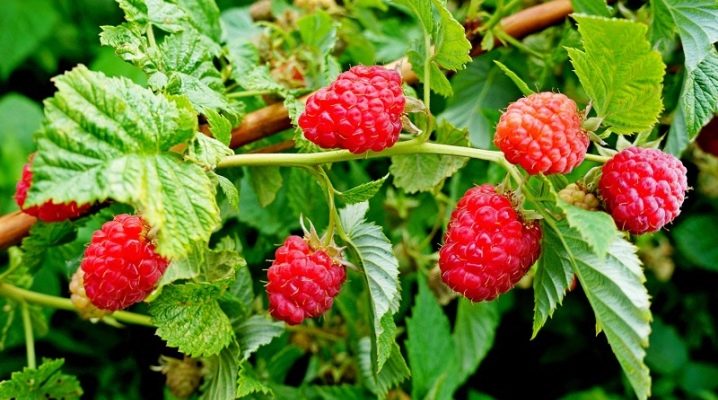
Raspberries are a delicious berry that contains a lot of nutrients. Therefore, it is not surprising that raspberry bushes grow in most areas. Caring for a raspberry tree is quite simple, and even a novice gardener can keep it in good condition.

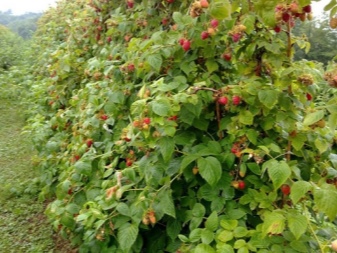
Description
Garden raspberry is a plant that belongs to the Pink family and the dicotyledonous class. Its life form is a shrub. Raspberries have a strong root system and multiply very quickly. An adult plant can reach one and a half to two meters in height. Young shoots are greenish in color. Over time, they grow stiff. All crimson shoots are covered with thorns. In young plants, they are very thin, in adults, they are strong and sharp.
The raspberry bush lives for about 10 years. After that, its root system dies off. Shoots begin to die after 2 years. Raspberry blooms in late May or early June. At this time, the whole raspberry tree looks very beautiful. After flowering, small berries begin to form on the bushes. Fruits appear on raspberries only in the second year of life.
Common raspberries have dark red or pink berries. But there are also varieties with a yellow, blue or black shade of fruit.
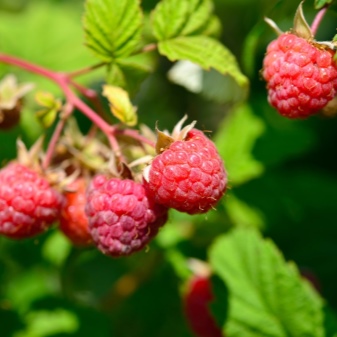
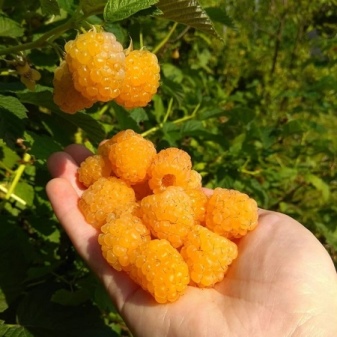
Spreading
The first raspberry bushes appeared in Asia. Over time, this plant was brought to Europe, and then to America. It was highly regarded for its delicious taste and medicinal properties. For many years, raspberries have been growing wild. People began to grow it on their plots only in the second half of the 16th century.
In Russia, raspberries were actively domesticated in the 18th century. At the same time, people began to breed new varieties of plants. Now raspberries are grown in many countries of the world. This plant adapts well to a wide variety of climatic conditions.

Popular varieties
Today, there are several main varieties of raspberries. Bushes are divided according to the size of the fruit, the time of their ripening, as well as frost resistance. This classification allows you to quickly choose the most suitable plant variety for yourself. Separately, it is worth highlighting remontant and standard raspberries. The first differs in that it can bear fruit several times per season. The standard culture is a small tree with thick and strong stems.
When looking for suitable plants for planting, you should pay attention to varieties that have long been popular among gardeners.
- "Scarlet placer". Native to Russia, this raspberry variety is great for planting in cold regions. It has good winter hardiness. The delicious raspberry fruit can be eaten as it is or used for processing.
- Willamet. This is a fairly common early raspberry variety. The first fruits appear on the bushes at the beginning of June. At the same time, raspberries bear fruit until September. This raspberry variety can be grown in most regions of the country.
- "Beauty of Russia". Perennial raspberry bushes have a well-developed root system. One of the main characteristics of this variety is its thornless stems. It is quite easy to care for a raspberry with such bushes. If the raspberries are cared for properly, they will bear fruit very well. From one bush, you can collect up to 5 kg of berries.
- "Autumn Beauty". This variety belongs to the group of remontants. The plant can bear fruit twice a season. Its fruits are large and sweet.Berries are great for both canning and freezing.
- "Polka". The homeland of this plant is Poland. This raspberry variety spreads well. It is ideal for growing in the Moscow region. The culture bears fruit from the beginning of June until the onset of the first frost.
- Taganka. This is a late-ripening raspberry variety. Like other similar plant species, it bears fruit very well. Bushes can be harvested 4-5 times. The plant is frost resistant. It is very easy to look after him.
- Tybury. This raspberry variety stands out among others. On the bushes grow berries of a dark, almost black color. Raspberry shoots are very tall. The productivity of the bushes is good. About 10 kg of berries can be harvested from one plant. Due to such active fruiting, the stems need strong supports.
Seedlings of all these varieties can be found on sale, so planting them on your site will not be difficult.
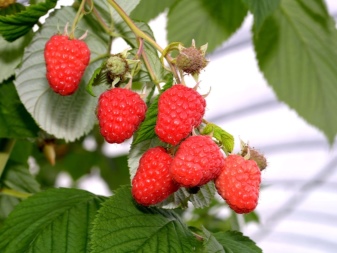
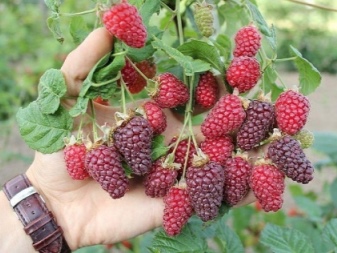
Landing
For the plant to bear fruit well, it is important to choose the right place for planting it. The yield of raspberries largely depends on the habitat. When looking for a place for a raspberry tree, you should pay attention to the condition of the soil. It should be fertile and loose. It is important that the groundwater is not too high. Otherwise, the roots of the plant can rot very quickly. It is recommended to equip raspberries on the sunny side of the site. Bushes should be well protected from the wind. You also need to be careful about the choice of "neighbors". Raspberries can be planted next to currants. Fruit trees such as plum, apple or pear can be found near the raspberry tree. Do not plant raspberries next to strawberries or cherries. This will lead to the fact that the bushes will more often suffer from various diseases and pest attacks.
It is also necessary to plant a shrub in the selected area correctly. There are two methods for planting bushes.
- In separate holes. For planting individual bushes on the site, dig holes about 50 centimeters in size. A mixture of fertile soil, wood ash and fertilizer is poured into the bottom of each pit. A thin layer of earth is laid on top. After that, the plants are placed in the holes and carefully added. Raspberry bushes should be spaced a meter apart.
- In the trenches. This method of planting plants is not much different from the previous one. Plants are planted in trenches about 50 centimeters wide. The distance between the rows should be within a meter. This is done to make it easier to care for the bushes. Finished trenches are filled with planting mixture. After that, seedlings are placed in them. Further, the trenches are well covered with earth, and the plants are watered.
You can plant raspberries in autumn and spring. The main thing is to choose a time when it will be warm enough outside.
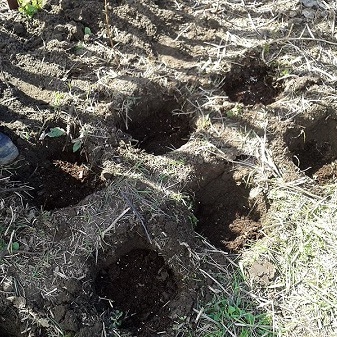

Care
Raspberries, like other plants on the site, need proper care.
Watering
First of all, attention should be paid to watering the plants. Most often, raspberries are watered in summer. Especially if it is very hot outside. On average, raspberries are watered once a week. In hot weather, this can be done a little more often. In general, you need to focus on the condition of the soil, as well as the appearance of the bushes. They should always be healthy and strong.
Watering plants before winter plays an important role. This procedure is carried out approximately two weeks before the first frost. It is needed to make it easier for plants to survive the cold winter season.

Top dressing
In order for raspberries to bear fruit well, they also need to be fed regularly. For the first time, fertilizers are applied to the soil when planting bushes. At this time, it is best to use high quality organic fertilizers. Some gardeners also use superphosphate. This makes the root system of the bushes stronger.
The same top dressing is recommended to be applied to the soil in the process of preparing the site for winter, in order to make the plants frost-resistant. In spring, plants are usually fed with nitrogenous fertilizers.This allows for faster leaf growth as well as increased raspberry yields.
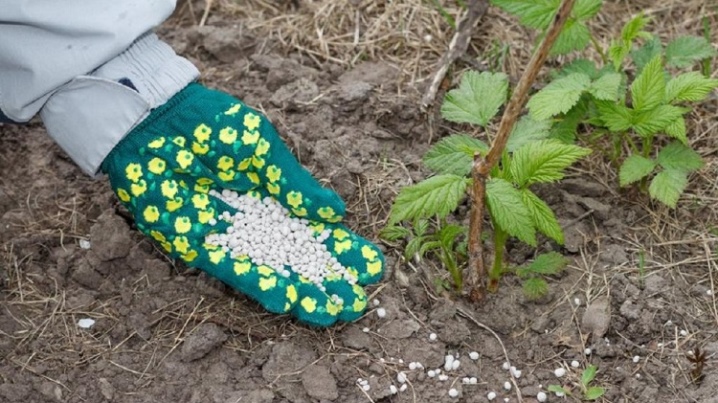
Transfer
All gardeners know that raspberries, which are constantly growing in one area, severely deplete the soil. In order for the plant to continue to bear fruit in the future, it is transferred to a new place. As a rule, the bushes are transplanted every 4 years.
The optimal time for transplanting raspberries is September. The features of choosing a place and planting bushes are the same as for a normal planting. When choosing seedlings for transplanting, you should pay attention only to healthy medium-sized shoots.
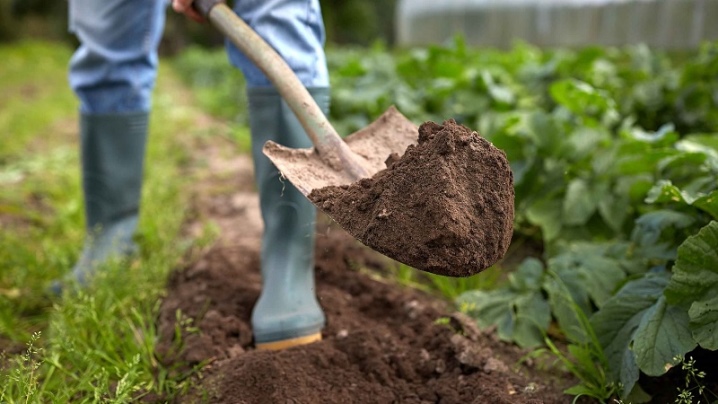
Pruning
Timely pruning of raspberries is equally important. Without it, the plant grows very quickly and practically ceases to bear fruit. In order not to harm the bushes in the process, it is important to cut them correctly. The following parts of the plants need to be removed.
- Last year's branches. Such shoots no longer bear fruit. At the same time, they take away the nutrients that the bushes need so much. Shoots are cut with sharp pruning shears right under the root.
- Weak shoots. Thin, surviving or too short branches should also be removed. The remaining shoots should be at a sufficiently large distance from each other.
- Tall plants. The tops of remontant raspberries are additionally cut off. This is very important for increasing the yield of the bushes.
There are many young branches near the bush at the end of the season. This growth also needs to be removed. All cut branches must be collected and burned or taken out of the site.
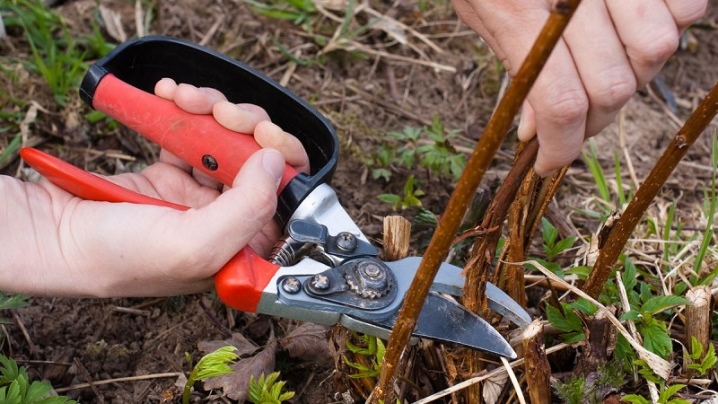
Preparing for winter
You need to start the process of preparing bushes for winter from the very summer. At this time, intensive feeding of the bushes is carried out. Potash fertilizers are not used during this period. After the end of the harvest, pruning is carried out.
The rest of the work is postponed until autumn. A week before frost, the bushes are well watered, and then mulched. After the leaves have completely fallen off, the bushes are bent to the ground. If you do everything right, the first snow that falls will cover them very quickly. You must act carefully so as not to break the shoots. For fixing the bushes, you can use strong nylon threads or wire.
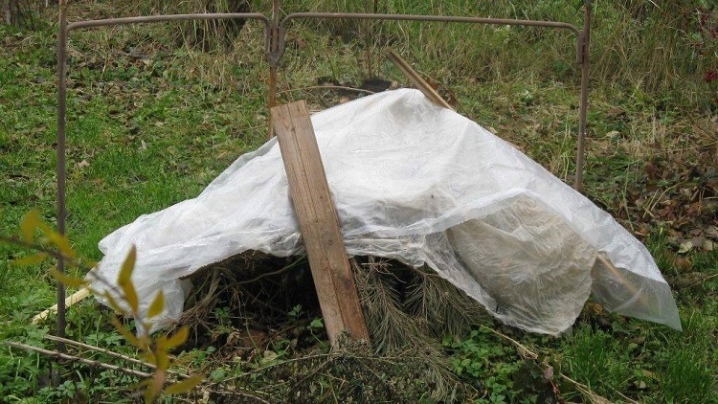
Reproduction
If there is at least one raspberry bush on the site, the gardener can easily propagate it and equip a full-fledged raspberry bush in his home in just a couple of years. This can be done in several ways.
- Offspring. They form on the roots of the raspberry. Both green and lignified offspring are suitable for reproduction. Choose healthy bushes for this purpose. In the fall, they must be dug up, cleaned of foliage, and then planted in a new place. Green offspring should be kept until spring. They are planted already with the onset of heat.
- Cuttings. This option is suitable for breeding a bush that has been growing on the site for a long time. The procedure is best done in the spring. The stalk must be carefully dug out, trying to keep the overgrown roots intact. Healthy roots must be cut. Next, the rhizome must be placed in a container with a growth stimulator. The next day, the plant should be planted in well-moisturized and loosened soil.
- By dividing the bush. This method is one of the simplest. One bush can be divided into two or three parts. For this, the plant is dug out, trying not to touch the roots. After that, it must be divided with a sharp knife. Both parts of the bush are immediately planted in prepared pits. After planting, the plants should be pruned, leaving only a small part of the stem.
You can also use raspberry seeds for propagation. But growing young seedlings in this way takes too long.
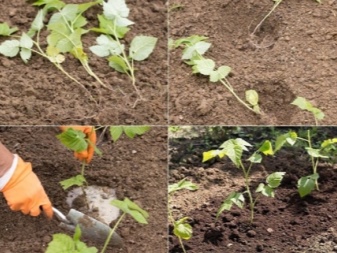
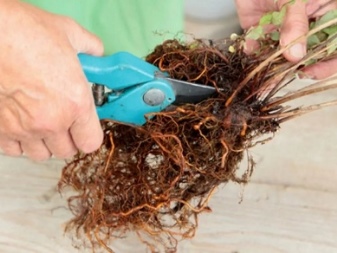
Diseases and pests
Like any other crop in the garden, raspberries can be affected by various diseases or pests. A novice gardener also needs to learn to deal with these problems. Raspberries are most commonly affected by the following diseases.
- Chlorosis. It is characterized by yellowing of the leaves. The berries on the ailing bush become small, and the shoots are deformed.You can prevent its appearance by regularly digging up the site, as well as maintaining the acidity of the soil normally. Chlorosis is not amenable to treatment.
- Curliness. In diseased bushes, the leaves become shriveled and tough. Berries acquire a sour taste. Shoots dry out very quickly. Curly, like chlorosis, is not cured. Infected plants must be removed from the site immediately and burned.
- Rust. This disease often leads to the death of a whole raspberry tree. The leaves of diseased plants turn dark, and then dry up and fall off. Rust is also not cured. Therefore, in order to prevent infection of the bushes, the site must be treated with Bordeaux liquid.
- Spotting. You can find out about this disease by noticing red-brown spots on the leaves. Over time, the leaves completely change color, and the shoots break. If the infected bushes are not destroyed in time, the entire raspberry tree will be at risk. After removing diseased plants, the site is treated with Bordeaux mixture.
- Powdery mildew. The disease affects raspberries in the first half of summer. Aerial parts of the shoots are covered with a friable white bloom. The leaves on such a bush begin to dry out, and the berries begin to deform. Having noticed these signs, the bushes must be destroyed, and the site must be treated with Bordeaux liquid.
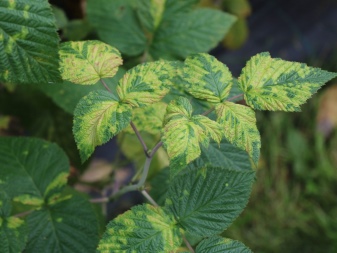

The list of pests that pose a danger to raspberries is also quite large.
- Aphid. Raspberry aphids harm not only raspberries, but also other berry crops growing in the garden. Aphids settle on the lower part of the leaves and feed on their sap. To control these pests, gardeners usually use karbofos or regular soap solution.
- Spider mite. These insects most often attack the raspberry tree in hot summer. Malofos is also suitable for mite control. In order to prevent the appearance of these pests on the site, it should be watered regularly.
- Raspberry beetle. Insects hibernate right in the topsoil. At the end of May, they move to raspberry buds and begin to actively eat them. In order to prevent damage to the crop, the site must be regularly inspected, and also cleaned of larvae and small beetles.
- Raspberry moth. This small insect can destroy the entire crop in a short time. In order to prevent the reproduction of moths, it is important to spray the area with confidor or karbofos solution.
If preventive work is carried out in time, as well as timely removal of diseased plants, raspberries will develop well and bear fruit regularly.
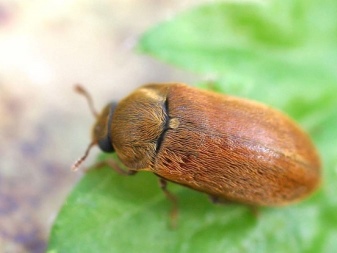
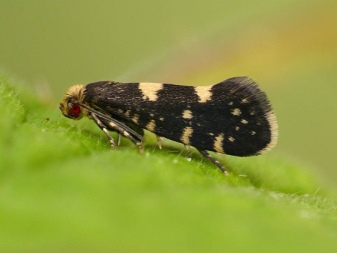
Interesting Facts
Raspberry is a plant that has been domesticated a long time ago. Therefore, there are many interesting things to tell about him.
- Raspberries are rich in vitamins and essential oils.
- Fresh berries are not stored for very long. Therefore, they are usually either eaten immediately or canned.
- Raspberries have a rejuvenating effect on the body. Therefore, it is useful for both adults and children.
- Decoctions of raspberry leaves are indicated for people with stomach diseases. Foods made from its berries help fight nausea and colds.
- Raspberry leaf tea can be drunk in order to relax and relieve sleep problems.
Knowing all about the beneficial properties of raspberries, gardeners are happy to grow this plant in their plots.
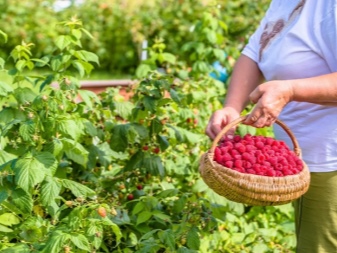
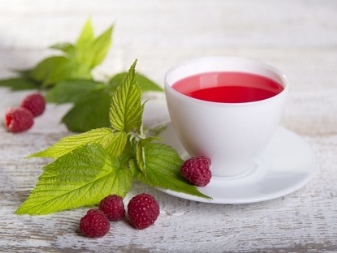













The comment was sent successfully.